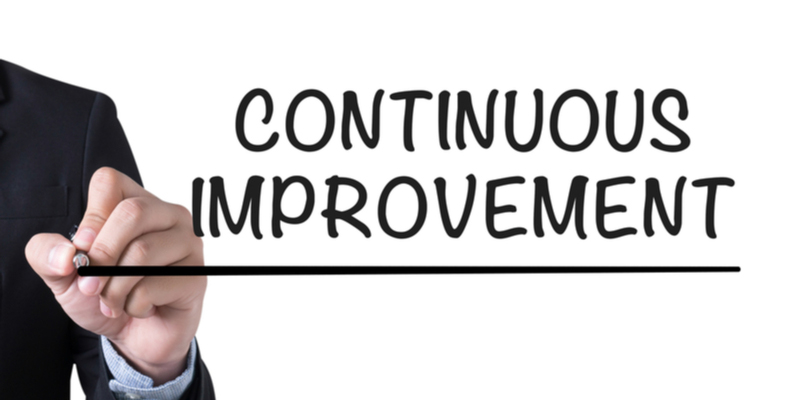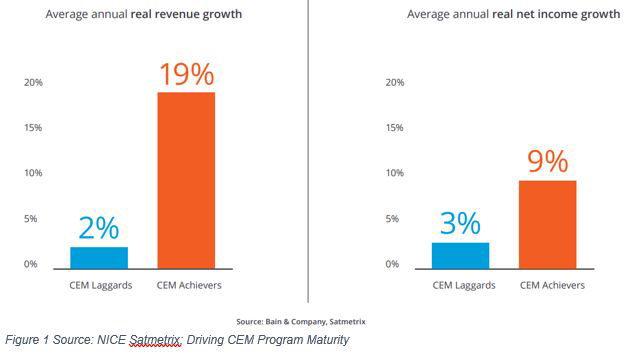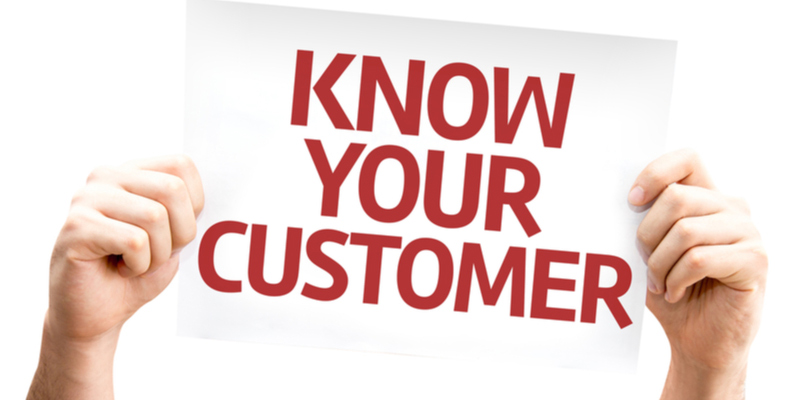Customer experience optimization can make loyal fans of your customers while failing to continuously improve CX can make customers think you just don't care.
As an example, a good friend of mine has had a successful Etsy shop for several years. When she first set it up, she raved about how easy it was to create a shop and add inventory. She was also impressed by the user forum and library of podcasts and trend reports available to help her get started and think about new products to design.
This information piqued my curiosity, so I've periodically asked her about her experience. She's told me about consistent enhancements Etsy makes to its policies and website functionality based on user feedback. For example, there is currently an SEO tool in beta testing designed to help shop owners attract more visitors by optimizing their product tags and titles.
Etsy is a great example of a business that is committed to customer experience optimization. They understand their customers' top priorities - attracting more visitors and selling more products - and continually make visible enhancements and publish information that helps their shop owners meet their goals.
It almost makes me want to get my hot glue gun out.
Brands that use their knowledge of their customers for customer experience optimization are always making things easier, better, and faster for customers. As a result, they will remain competitive and thrive in today's experience economy.
What is customer experience optimization?
Before we discuss optimization, let's get a baseline understanding of what customer experience is, because the term is used in multiple ways. The customer experience (CX) is a person's opinion or impression of a brand based on a collection of interactions and impressions that can range from promotional emails to product experiences to customer service interactions. CX is an individual thing, so it can be different from person to person. Because of this, businesses try to make experiences consistent and of high quality throughout the customer journey so that customers have a uniformly positive opinion of the brand.
This is where customer experience optimization comes in.
Customer experience optimization is the continuous process of improving CX by enhancing individual touchpoints and the overall customer journey. And because we can't always give customers exactly what they want, optimization efforts also need to balance customer demands with budgets and business objectives.
Optimizing CX requires understanding what your customers need and want. Additionally, businesses need to analyze the most common paths people follow as they transact with the brand. Customer journey mapping is an effective way to better understand these paths and identify touchpoints and hand-offs that create friction and frustration.
The mapping exercise can identify improvements to include in customer experience optimization efforts. For example, if a customer who switches from self-service to phone support has to repeat their issue to the phone agent, that's a clumsy hand-off that should be improved.
Companies don't need to use a big bang approach to customer experience optimization. In fact, they might use an incremental approach so they can measure the effectiveness of each enhancement and determine how similar improvements will impact CX. This type of information helps prioritize future enhancements and ensure the business is investing in improvements that will give them the biggest payback.
And not all improvements need to be big and expensive. Simply switching your hold music from orchestral versions of Air Supply songs to something more current that's in line with your brand's young, hip image can add more consistency to the customer experience.
5 facts to know about customer experience optimization
In addition to knowing the definition of customer experience optimization, contact centers should know the following characteristics so they can better understand their roles and responsibilities.
1. CX optimization is an enterprise effort
Optimizing CX isn't just a website or marketing or contact center initiative. Because customer experience is people's opinion of a brand, most business teams play a role in delivering satisfying CX, even ones that aren't directly customer-facing. For example:
- HR/Recruiting is responsible for hiring talent, including customer service agents, that will be committed to and capable of carrying out the business's CX vision and plans.
- Accounting is responsible for accurate billing and payment processing, which has a significant impact on the customer experience if not done correctly.
- Procurement teams need to purchase high-quality materials so products aren't defective.
And, of course, marketing, customer service, product development, retail, and e-commerce teams have a significant impact on the customer experience. If you're creative enough, you can probably find ways that the facilities and building security teams impact CX!
In addition to not being the sole responsibility of one team, customer experience optimization isn't about optimizing a single touchpoint or even focusing only on touchpoints and not the end-to-end customer journey.
Your website, stores, and contact center can all be fully and individually optimized, but if they aren't integrated so customers can move across them seamlessly, that's a big CX gap that needs attention.
2. Customer experience optimization requires a deep understanding of your customers
Optimizing CX means getting closer and closer to what customers want and need from your business. This means businesses need to base improvements on actual customer expectations, not what the business assumes their customers expect. Be careful of thinking you already know your customers - demands are fluid.
Get to know your customers better through data. Modern technology produces a wealth of valuable customer information as well as the ability to turn raw data into actionable insights.
When identifying customer-centric CX improvements, gather data from as many sources as possible to ensure you're getting a holistic understanding of your customers. Contact centers have several valuable ways to collect and analyze customer data, including the following.
Customer surveys
When contact centers use configurable customer survey tools, they can survey customers about any topic in any channel. Common survey types include:
- Customer satisfaction (CSAT). CSAT surveys measure customers' satisfaction levels with a specific aspect of the business at a specific point in time. Contact centers typically use CSAT surveys at the end of an interaction to assess satisfaction with the resolution, the experience, the agent's competence and friendliness, and more. CSAT surveys should be designed with open-ended fields where customers can explain the reason for their rating.
- Net Promoter Score (NPS). Net Promoter Score is calculated from a single question - "How likely is it that you will recommend [company] to friends or family?" The resulting Net Promoter Score is an indication of brand advocacy and loyalty and can also predict future business growth.
- Customer effort score (CES). Customer effort surveys are particularly relevant to contact centers because they measure how much effort customers had to exert while they transacted with the business. If customers put a lot of work into getting issues resolved, that process is a good candidate for optimization.
The scores these surveys produce can be good indicators of whether improvements are having the desired effect on CX. But as valuable as survey results are, they don't paint a complete picture.
AI-powered interaction analytics
Customers tell your agents what they like and don't like all day long. But fully leveraging this valuable data has traditionally been a nearly impossible task. Advancements in artificial intelligence have brought this gold mine of information into the light so businesses can better understand their customers.
AI-powered interaction analytics tools can analyze 100% of interactions from all channels in real-time. The insights produced include customer sentiment, contact drivers, and trending topics, all of which help identify areas that need customer experience optimization.
For example, if the key phrase "what is this charge for" is mentioned frequently, it could indicate a need to improve how bills are designed. Fixing that issue can improve CX and reduce contact center volume. Optimizing CX often has that effect.
Operational data
Did you know a majority of unhappy customers don't complain? They simply leave. But that doesn't mean contact centers can't collect and analyze data about them. Sometimes a customer's behavior speaks volumes about what they think of their experience.
Contact centers can use operational data to identify points of friction that are frustrating customers. An obvious sign of customer displeasure is high abandon rates. But also keep an eye on self-service metrics. Are success rates low? Do most self-service customers transfer to an agent for resolution? Even if the complaints don't appear on survey results, your silent customers are sending you a clear message.
Individually, these data sources provide helpful information about your customers. When combined, they paint a much clearer picture that can guide your customer experience optimization initiatives.
3. CX optimization is a continuous effort

Customer experience optimization is an ongoing activity. Advances in technology and changes in customer preferences create opportunities and the necessity to always improve CX. And besides, nothing is ever perfect. There will always be a need to make refinements to the customer experience.
To that end, many brands have implemented formal customer experience management (CEM) programs to keep their continuous improvement initiatives on track. CEM is a disciplined approach to customer experience optimization that relies on data and employee behavior to drive meaningful change.
CEM teams are responsible for establishing CX goals, analyzing customer data, making data-driven improvement recommendations, selecting technical tools, and gaining organizational buy-in. And they follow a structured CEM process such as the following:
- Collect data. As we've already discussed, the more the better. In addition to contact center data, organizations should also gather information from sources such as website analytics, product reviews, and social media comments.
- Analyze the data. The analysis step should produce insights about customer opinions and expectations and help businesses identify opportunities to improve CX.
- Close the loop. Data analysis may identify individual customers the organization should contact in order to address their issues and try to salvage relationships.
- Act on data. The CEM team is responsible for sharing results of data analysis across the enterprise and collaborating with other business teams to identify and implement CX improvements.
- Drive change. Ultimately, a CEM program needs to be a catalyst for continuous customer experience optimization.
4. CX optimization requires modern technology
In today's digital world, you really need advanced technology for successful customer experience optimization. Not having up-to-date systems for optimization efforts is like trying to use a sponge to hammer a nail.
Analyzing all the customer data that's gathered for optimization initiatives requires AI-powered analytics tools designed to consume vast quantities of data and transform it into useful insights.
But the need for the best technology isn't confined to analysis. Contact centers can also leverage modern solutions to directly impact CX. Let's take a look at a couple of examples.
Smart self-service
Most of your customers don't want to contact customer service; they prefer to handle matters themselves. Businesses that don't offer their customers effective self-service options are missing a significant opportunity to improve CX. Organizations should consider implementing the following solutions to help customers help themselves.
- Knowledge base that makes it easy to find answers through websites, search engines, agents, and other forms of self-service.
- Conversational IVR that empowers customers to handle simple transactions by using normal language.
- Virtual agents that use artificial intelligence to recognize speech and intent in order to facilitate simple transactions and answer questions.
Omnichannel
While creating customer journey maps, it’s important to assess the transitions as customers move from touchpoint to touchpoint. Are they rough or smooth? An example of a rough transition is requiring customers to repeat information when they switch support channels - for example when they switch from email to voice. Ninety-six percent of consumers expect businesses to make it easy when they switch channels.[i]
To meet this expectation, contact centers need:
- Omnichannel routing capabilities
- Workforce management software capable of omnichannel forecasting and scheduling
- A unified agent desktop that enables omnichannel agents to better manage their interactions
5. Customer experience optimization can really pay off
A majority of businesses are currently competing mostly on the basis of CX.[ii] There's a good reason for that. Today's consumers place a premium on consistently high-quality experiences. CX influences purchasing behavior, loyalty, customer lifetime value (CLV), and brand advocacy.
- Most consumers agree they are willing to buy more products (87%) and are willing to recommend a company to others (81%) if they have an exceptional customer service experience[iii]
- "74 percent of consumers are at least somewhat likely to buy based on experience alone"[iv]
- "Customer experience drives more than two-thirds of customer loyalty, outperforming brand and price combined"[v]
Businesses that recognize the importance of CX and prioritize customer experience optimization are reaping the rewards. For example, businesses that excel at customer experience management realize an average of 19% annual revenue growth, compared to just 2% for Customer Experience Management (CEM) "laggards."[vi]

Businesses can avoid being "laggards" by continuously optimizing CX. Business success and survival depend on it.
How NICE CXone can help with your customer experience optimization efforts
You put the customer first in all you do. So do we. Every day, we help companies of all sizes build customer relationships that last. NICE CXone is the market leader in providing customers the cloud contact center software they need to deliver consistently exceptional customer experiences.
Watch our demo video to see the difference modern contact center software can make on the customer experience.
[i] NICE CXone: 2020 Customer Experience (CX) Benchmark, Consumer Wave (2020)
[ii] Gartner: Key Findings From the Gartner Customer Experience Survey (2018)
[iii] NICE CXone: 2019 NICE CXone Customer Experience (CX) Transformation Benchmark, Global Consumers (2019)
[iv] Forbes and Treasure Data: Forbes Insights Report: Proving the Value of CX
[v] Gartner: How to Excel at Strategy and Execution: A Marketing Perspective (2019)
[vi] NICE Satmetrix: Driving CEM Program Maturity





